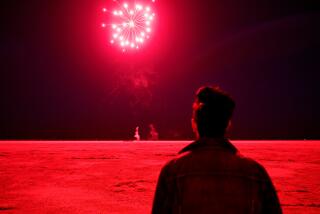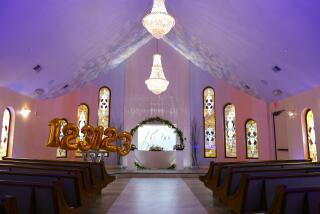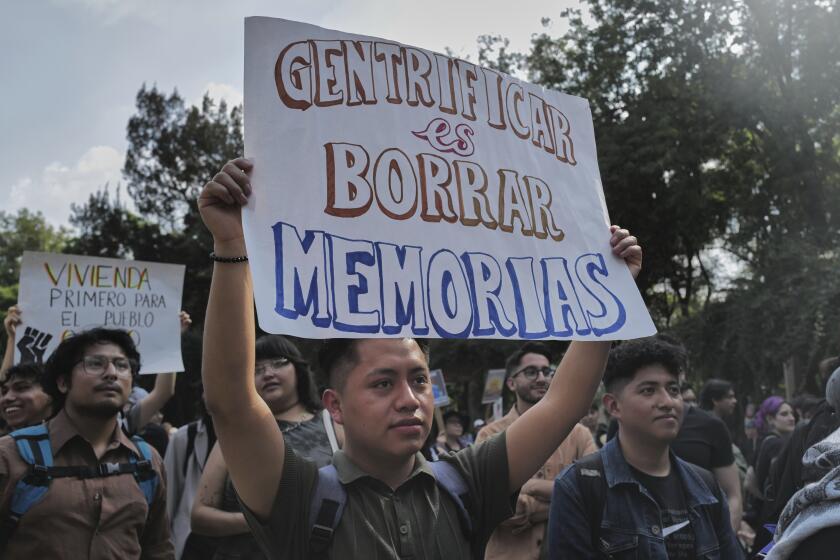Expecting Best, Bracing for New Year’s Worst
- Share via
NEW YORK — After spending more than $300 million on plans that include a state-of-the-art command center complete with filtered air to thwart chemical and biological attacks, officials here believe New York is fully prepared to face potential problems as the millennium looms.
More than 37,000 police officers will be on duty New Year’s Eve, 7,000 in Times Square alone; and officials have stockpiled 50,000 heater meals--add water and the food gets hot--for anyone who needs them, along with extra generators, a three-month supply of batteries and extra suits for protection against hazardous materials. In addition, schools with old-fashioned coal-burning furnaces have been identified as shelters in case of power failures.
The list of preparations continues for pages.
But the bottom line is that officials who gathered in the emergency management center in Manhattan’s World Trade Center complex for a drill this week believe problems, if any, will be minimal.
Seated before computer consoles in a room with walls designed to withstand 200-mph winds, representatives from both the federal and state governments, the utility companies and about two dozen city agencies practiced dealing with emergencies ranging from snowstorms and water main breaks to terrorism.
“Are there going to be some problems? Sure,” said Jerome M. Hauer, commissioner of the mayor’s office of emergency management. “There will be some glitches here and there. Are there going to be citywide blackouts all over the United States? Is the sky going to fall? The likelihood is nil.
“But the responsible thing to do is plan for it.”
Most attention has focused on Times Square, where some estimate that as many as 2 million people may gather to watch a crystal ball drop to mark midnight. But 328 other public events are scheduled in the city on New Year’s Eve--including a celebration in Brooklyn that could draw large crowds and a mini-marathon in Central Park that could attract hundreds of runners.
Because of concerns about potential terrorism, security is being tightened at such symbolic sites as the World Trade Center, the Statue of Liberty, the stock exchanges and Rockefeller Center.
Times Square poses a special security challenge. The celebration--complete with puppet shows, more than 500 costumed dancers and a new 6-foot diameter, 1,070-pound Waterford crystal ball that will start to descend just before midnight--is designed to last for 24 hours.
The ceremonies here will begin in the early morning, just as midnight approaches in the South Pacific, and will end at 6 a.m. New Year’s Day.
The arrival of the millennium in different parts of the world will be marked in Times Square 24 times. Drummers and dancers will perform under a gentle shower of cherry blossoms when Japan and Korea enter the new century, and the classic sounds of Carnival in Rio will be heard as the millennium reaches Brazil.
All 7,000 officers assigned to Times Square are receiving a special day of training that stresses crowd control and quick response.
The crowd will be kept in designated areas, and there will be an emergency evacuation route every 200 feet. Five giant video screens are being placed on nearby streets for those unable to enter Times Square, because police veterans of past New Year’s parties say it can hold only about 700,000.
Utility crews and emergency service personnel will be positioned throughout the city to ensure rapid responses in case of massive traffic jams.
Starting Dec. 29, more than 100 crisis managers will begin duty in the emergency management center. The FBI and the Police Department will operate separate centers--with shared information.
As the millennium moves around the world, it will provide planners in New York with a preview of potential problems they may face.
And a representative from California’s Department of Information Technology will be in the emergency center to relay information to authorities awaiting the stroke of midnight on the West Coast. Officials in Los Angeles say they have spent $110 million to prepare for the worst.
Hauer predicts that reassuring the public could be a big part of his job as information flows in from other parts of the world.
“I think the issue that people have not addressed is the impact of what’s going to happen overseas,” he said, “and I think that could have a major impact on the collective psyche here in this country.
“Let’s say the ATM machines go down in Fiji, and that is going to be reported all over the news. . . . It’s very important we understand that as quickly as possible and understand what went on because people are going to start hitting the ATMs here. They are going to start getting nervous.”
So what do authorities think will happen after the ball drops in Times Square?
“Hopefully, we will be greeting the new morning . . . and everything will have been a big yawn. . . . At the end of the day we will have said that it was pretty boring,” Hauer said.
If not boring, certainly sober. Unlike many New Yorkers, the crisis managers gathered in the command center won’t toast the millennium with champagne. “We don’t have any booze,” Hauer said.
More to Read
Sign up for Essential California
The most important California stories and recommendations in your inbox every morning.
You may occasionally receive promotional content from the Los Angeles Times.













